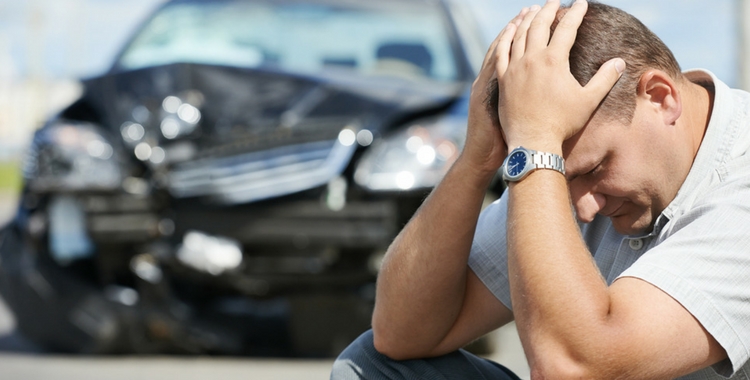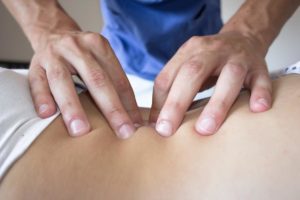Statistically speaking, every American can expect to be in a motor vehicle accident once every ten years. This can be a pretty scary thought. However, there is a silver lining. Chances of a full recovery are good if you know what to do right after the accident occurs.
A big reason people have lasting negative effects as a result of what they may consider a “minor” accident, is because they don’t know the proper course of action to take. They either do the wrong thing, or they do nothing. Their injuries don’t heal, and may even continue to get worse over the upcoming weeks, months, or even years following the accident.
So often I have had patients come into my office saying, “I was in an auto accident—but it was so long ago. I can’t imagine this pain can be related,” or “I didn’t even think I was injured at the time! But I sure feel it now,” or, “I don’t understand why I’m having all of these issues now, I walked away without a scratch!” or, “The E.R. discharged me with a clean bill of health… but I’ve been having terrible headaches ever since…”
This post will help you better understand the proper course of action to take after an accident to ensure optimal healing and recovery, allowing you to return to your prior level of function and previous lifestyle as soon as possible.
Right after an auto accident occurs, your first thought is probably “is everyone okay?” Oftentimes we think that if there is not a large quantity of blood or a few broken bones and everyone is conscious, it means everything is “okay”.
What we fail to understand is that, first of all, the body goes into a state of hyperarousal called “acute-stress-response” directly after an incident like a car accident. Adrenaline and endogenous opiates (the body’s natural morphine) flood the system, masking pain, to give you the mental clarity and wherewithal to deal with the immediate events at hand. Only after the incident—several hours or even days later—do you begin to feel the effects of what happened, mechanically speaking, to your body during the impact.
Secondly, sometimes injuries are only manifest after the fact, meaning, a minor physiological event can have a domino effect on the alignment and well-being of the entire body, which can gradually evolve and escalate into a major problem. What may be thought of as a “minor whiplash” event or “a little stiffness” in the body can be the beginnings of a chronic issue which, if not treated promptly and correctly, could end up causing you a lot of problems down the road.
So, first and foremost, just because you feel “okay” initially, doesn’t mean you are in the clear. It’s still in your best interest to see a chiropractor after an auto accident to assess the alignment of your spine and musculoskeletal system, properly identify any potential problems which may occur as a result, and begin treating them immediately.
Even if you go to the emergency room directly following the incident, more often than not, the doctors and staff will release you, as long as there are no broken bones or open wounds. That is what they are trained to do: Identify life-threatening injuries, set broken bones, and suture lacerations. And they do it well. What they are not trained to do in the E.R., however, is asses potentially chronic issues that may arise from muscular and skeletal imbalances that occur as a result of the mechanical forces in place upon impact.
After completing my accident reconstruction training, I came to realize the importance of understanding everything about a car crash and how the vehicle collision, or the dynamics of movement, translates into bodily injury. By mentally reconstructing the accident, you can better understand the biomechanics of the body which led to the injury and unlock the secret to healing those injuries.
Another common occurrence following an auto accident, which can also be a product of the acute-stress-response, is to focus on everyone and everything except yourself and your own well-being. Especially if someone you love sustained a more serious, or at least more obvious, injury than you. You want to make sure they are okay—which is very noble, however, don’t neglect yourself and your own well-being in the process. People also tend to worry about their vehicle, their insurance, their loss of wages or financial stress and strain, more than their physical discomforts. Oftentimes the immediacy of practical matters seems to trump all other problems—including health and wellness.
Don’t get me wrong—these things are important and necessary to deal with. However, by putting your health first, you will be in a better state of body and mind to deal with what needs to be dealt with and avoid long-term health issues that could have been avoided had they been identified and treated.
It helps to have people you can turn to, people you trust, to help you navigate these external matters so you can focus on getting “back in the game”— of life. For these reasons, in my office, I have made sure we have the knowledge and associations to assist my patients with good legal counsel—to help alleviate their stress and allow them to focus on their own recovery from auto accident injuries.
Because most car crashes are due to errors in judgment on the roadway, the person who is at fault is legally responsible for making things right. This is done through negotiations with the insurance companies to make sure that you are not taken advantage of. When you’ve had your life turned upside down, having an attorney watching your back can make the process much smoother, easier, and less intimidating. It’s all part of the entire picture of wellness—having trusted associates who can handle the logistical matters so you can focus on your healing.
That means seeking good injury care, and being sure you have healed to the fullest extent possible before settling. My goal with fixing people who have been in a car wreck is to bring them back to 100% healing without drugs or surgery, if possible.
Which brings me to my next “do”. If you have a permanent injury as a result of an auto accident, make sure you have a second and third (non-surgical) opinion before pursuing surgery—especially a surgery that involves removing body parts or fusing joints. So many times people are only given one option, based on one opinion, and they don’t know better than to go with that one option. Many times there are alternatives that can literally save you—life and limb. Make certain you are well-informed on all of your options before making a decision that will impact the rest of your life.
With an auto accident, there will be some soft tissue trauma. Soft tissues are muscles, tendons, ligaments, and vertebral discs. Though “rest” is very important in healing the tissue trauma, it’s important to begin immediate gentle treatment for a full recovery. Chiropractic adjustments are too aggressive immediately following most car wrecks; it’s important, to begin with very passive gentle therapy, such as ultrasound, light muscle stimulation, and gentle massage therapy. Once the injured tissues begin to heal, a little deeper massage and some movement therapy can be added, and possibly some trigger point injections. Lastly, if needed, some gentle adjustments to the spine and joints can help realign the structures of the body, so things are all working in a balanced, natural state.
Though car accidents are inconvenient, intimidating, and oftentimes, infuriating… they are part of life. As long as you drive a vehicle, you run the risk and probability of being involved in an auto accident. When that happens, rest assured that things can, and most likely, will get back to normal for you, if you know what to do. You will, once again, find wellness on the other end. And, remember, you can purchase a new car. What you can’t buy, is a new body. Treat it well.



Recent Comments